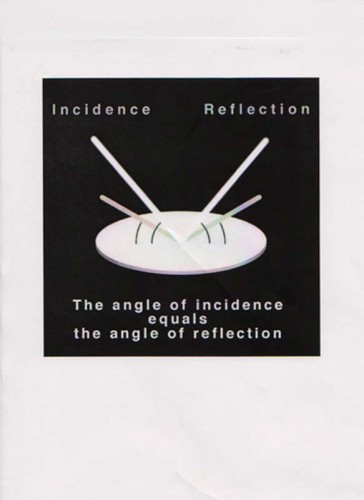Have you ever driven past a glass high rise or office building and just for a few seconds as you were driving by the glass in the building started to glow, and just as fast as it appeared it disappeared? Usually when this happened, wasn’t the sun closer to the horizon than at it’s apex in the sky?
Well, you can stop wondering why that was because you were experiencing a phenomenon that’s referred to as “The Law of the Light”.
When light strikes (falls on) a surface it strikes it at an angle, and that angle is called the “Angle of Incidence”. When that same light bounces off that surface to the lens, it’s called the “Angle of Reflection”. When the two angles are the same, it’s called the “Law of the Light”. It’s what causes that “POP” (as I call it) or that glow in the glass. The reason why you see the glow is because you’re driving right into the same angle of light that hit the building and is now being reflected off it to your eyes, and the reason why it goes away so quick is because you’ve driven out of that angle.
So why is this so important in taking our photos “Up a Notch”? Well for one thing it’s my favorite way to light…anything!!! So, how do we go from watching the “POP” on a building to utilizing the “Law of the Light” in our Photography? In my online class I teach with the BPSOP, and in my “Stretching Your Frame of Mind” workshops I conduct around the planet, I show my students just how it’s done and how easy it is to do it.
In my photo of the 57′ Chevy I shot for National Car Rental, the first thing I did was to determine the exact location of the setting sun…to the degree. I did this with my Sunpath readings and my Morin 2000 hand bearing compass. Once I knew where the sun would hit the horizon, I positioned the Chevy so that the grill would be in the correct angle. That is, the angle from the sun to the grill was the same angle as the grill to the lens. This enabled me to get that “POP” on the grill that I was after. Since the “POP” was so bright on the grill, I had to move my camera so I would be slightly out of the exact angle.
FYI, the cloud formation behind the Chevy was in the same angle.
Knowing where to put your camera, when to put it there, and how long you have to shoot it there, makes all the difference in the world. It’s the difference between shooting “In the camera”, and doing post processing work. Since I knew all those things, I didn’t have to do anything later in post production!!!!! It’s all in the camera, including the bird.
Stay tuned for my part II post of the “Law of the Light”, where I’ll show you how I shoot portraits utilizing it.
Visit my brand new website at: www.joebaraban.com, and check out my 2019-2020 workshop schedule. Come shoot with me in the “Law of the Light”.
JoeB







Hi Joe,
awesome photo. Was this shot in film or in digital?
Valeriano,
This was shot with a 2/14X 2/3/4 Mamiya RZ67, and it was shot on film. The sharpness comes from the big negative. I can get this same effect with my Canon 5D Mark II. It’s the “Law of the Light” that makes it look this way.
JoeB
Thank you. It’s incredible that you got the tire lit too, without having the sky out of the exposure range.
Valeriano,
The tire is lit with a silver reflector.
Joe
Wow, Joe, that’s incredible… how can I begin to thank you for sharing this very important tip!? Once again, the way you share these great details is second-to-none, I really appreciate that.
You’re welcome. You can buy me a Bombay Martini sometime!!!
JoeB
The photograph is terrific, Joe.
The precise name for the phenomenon is direct reflection: the car is reflecting the direct light of the sun. Most of the time objects reflect sunlight already difussed by the atmophere, or other objects.
The law being used is the Law of Reflection: the incident angle equals the reflection angle.
Gustavo
Gustavo,
You’re right, it’s called the “Law of Reflection”, but it’s also referred to as “The Law of The light” since it takes two equal angles to complete it. Anyway, this is the term I and others have been using since I started teaching workshops in 1984…and it sounds better!!!
🙂
Also, since our atmosphere is made up of water vapor (composed of tiny crystals) all light, ALL the time, is diffused/refracted. The more humidity (water vapor) there is in our atmosphere determines the value and saturation of a color, and the intensity of the light.
Thanks for your input, I appreciate it!!!
JoeB
Well, The Law of The Light certaily sounds more poetic 🙂
Keep the good advice coming!
A perfect word…poetic, also more romantic and more literal as well!!!
Thanks,
JoeB
That is an awesome photo and the copy on http://www.joebaraban.com is even better. Thanks for explaining how you captured the “POP”. A lot of planning went into getting it. Looking forward to seeing how you use it in portraits. I’m going to have to try it out.
Michael,
It’s my favorite way to light people.
JoeB
Fabulous image Joe and I am always impressed with the no PS! You really know how to use light. I enjoy your blogs.
Thanks for sharing your knowledge.
Debby
Thanks Debby.
Thanks!!!
JoeB